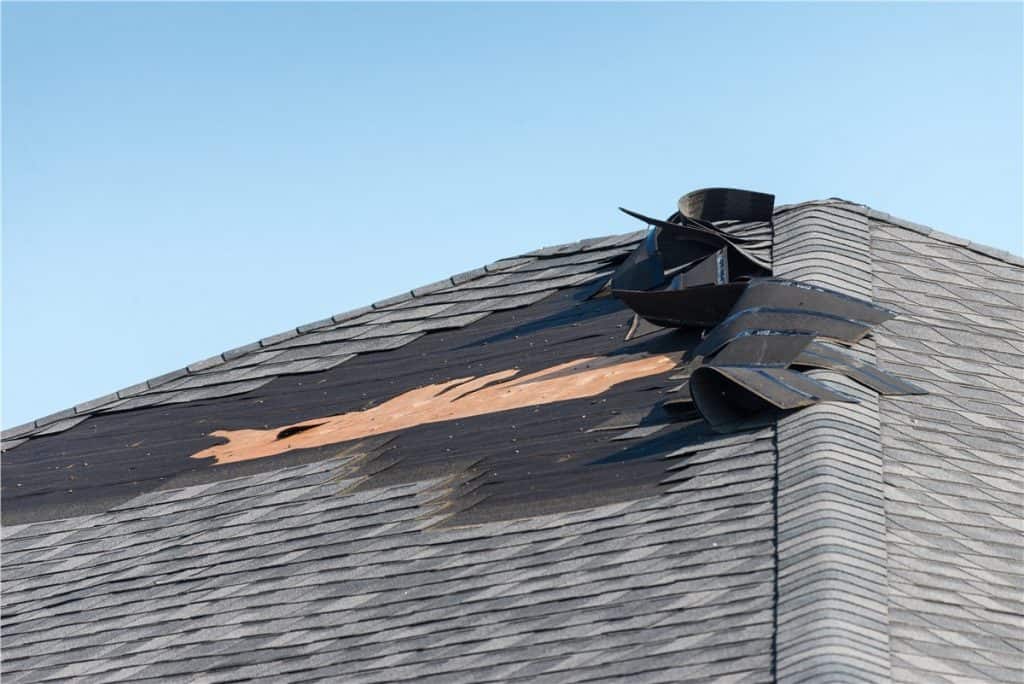
The first step to replacing a roof is to determine the amount of existing roof that must be removed. In some cases, the roof will need to be replaced more than three quarters. While repair is less expensive per square foot than replacement, integrating new shingles into the existing roof takes more time, and it won't look as good as a complete replacement. Below are some factors that could affect the cost to replace your roof.
You'll need to keep your pets inside when you replace the roof of your home. Avoid putting your pet's safety at risk by boarding them. To save time and hassle, you can remove the last layer of shingles if you are replacing just one layer. Depending on the type of roofing material and the area where you live, a new roof could cost anywhere from $5,000 to $14,000 or more. Whatever method you choose, make sure you comply with local building codes. Also ensure adequate ventilation.

If you're a homeowner, make sure you hire a contractor to do the work. The installation of a new roof will take several days. It can also make a lot noise. The noise should not be so loud that it becomes too bothersome for you or your neighbors. Temporarily moving sensitive family members may be an option. Regardless of the time of year, a new roof will keep your home dry and warm for years to come.
You should verify that the contractor you hire has insurance and permits before you make a decision on the type or roofing material to be used. If you are looking to save money, a contractor with permits and insurance is the best option. A roof that doesn't exceed $1,000 is a wise decision. A new roof can be installed in just one to two months. After the job is done, however, there will be a lot more dust and debris.
The most important thing when it comes to roofing is the type of material. Some people prefer asphalt shingles over synthetic ones, but this isn't the best option for all situations. If you want to enjoy a new roof for many years to come, make sure it matches the colors of your home. If it doesn't match, you'll need to replace it. Asphalt and wood shingles are the most popular types of roofing material.

A roof replacement can be a big investment. A skilled roofer will examine your home to ensure it's protected from potential damage. A professional roofer will inspect the home and look for potential leaks. It is important to remove gutters and shingles from an existing roof. It will cost more to repair damage caused by storms than to replace the entire roof. A replacement is often necessary in many cases.
FAQ
You can live in a house while it is being renovated.
Yes, I can live in my house while renovating it.
Are you able to live in your house while the renovations are ongoing? The time taken to complete the work will impact the answer. If the renovation process takes less than 2 months, then your home can be lived in while it's being renovated. However, if the renovation project lasts longer than two months, then no, you cannot live in your home while the renovation is taking place.
It is important that you do not live in your home during major construction. There is also the possibility of dust and noise pollution from the heavy machinery at the job site.
This is especially true for multi-story houses. This is because the vibrations and sound created by construction workers could cause serious damage to your property.
You will have to live in temporary accommodation while your home renovations are underway. This means that you won't have access to all the amenities that come with your own home.
When your dryer and washing machine are in repair, for example, you won't have access to them. It will be difficult to bear the smell of paint fumes as well the sounds that workers make.
All these factors can result in stress and anxiety within your family. So it is important that you plan ahead so you don't feel overwhelmed by all the circumstances.
To avoid costly mistakes, do your homework before you make any decisions about renovating your home.
A reputable contractor can also be of assistance to you in order to make sure everything runs smoothly.
How Much Does it Cost to Renovate a House?
The cost of renovations depends on what material is used, the size of project and how complicated the job is. Certain materials, such as wood, require special tools like drills and saws. Others like steel don't. The price of renovations will depend on whether you need your contractor to do everything or if the work is done by you.
Home improvements can cost anywhere from $1,000 to $10,000 on average. If you are looking to hire professionals, expect to pay between $5,000 and $25,000. The cost to hire professionals would range from $5,000 to $25,000,000. On the other side, you could spend up to $100,000 if your task is completed entirely yourself.
It is important to know that renovation costs can be affected by many factors. You should consider the material used, such as brick vs concrete. Brick vs. concrete, the project's size, the number and duration of workers, etc. You must always keep these factors in mind when estimating the total cost of renovation.
Is there anything I could do to save on my home renovations?
It is possible to save money by doing the work yourself. Reduce the number and frequency of people you hire for the renovation. You might also look for ways to decrease the cost and use of materials in the renovation.
How important is it that you are preapproved for a loan?
It's important to be pre-approved for mortgages. This will allow you to determine how much money you can borrow. It helps you to determine if your loan application is eligible.
Statistics
- Design-builders may ask for a down payment of up to 25% or 33% of the job cost, says the NARI. (kiplinger.com)
- They'll usually lend up to 90% of your home's "as-completed" value, but no more than $424,100 in most locales or $636,150 in high-cost areas. (kiplinger.com)
- A final payment of, say, 5% to 10% will be due when the space is livable and usable (your contract probably will say "substantial completion"). (kiplinger.com)
- Rather, allot 10% to 15% for a contingency fund to pay for unexpected construction issues. (kiplinger.com)
- ‘The potential added value of a loft conversion, which could create an extra bedroom and ensuite, could be as much as 20 per cent and 15 per cent for a garage conversion.' (realhomes.com)
External Links
How To
How do I plan a whole house remodel?
Planning a whole house remodel requires careful planning and research. Before you begin your project, there are many things to think about. The first thing to do is decide what kind of home renovation you want. You could choose from different categories such as kitchen, bathroom, bedroom, living room, etc. Once you've chosen the category you want, you need to decide how much money to put towards your project. It's best to budget at least $5,000 per room if you don't have any experience working on homes. If you have more experience, you might be able spend less.
After you have determined how much money you have available, you can decide how big of a project you would like to undertake. A small kitchen remodel will not allow you to install new flooring, paint the walls, or replace countertops. However, if enough money is available to complete a kitchen renovation, you should be able handle most things.
Next, you need to find a contractor who is experienced in the type project that you want. This will guarantee quality results, and it will save you time later. After you have selected a professional contractor, you can start to gather materials and supplies. You might need to make everything from scratch depending upon the size of your project. However, it is possible to find everything you need in a variety of shops that sell premade items.
After you've gathered all the supplies you need, it's time to begin making plans. You will first need to sketch out an outline of the areas you plan to place appliances and furniture. Next, design the layout of your rooms. It is important to allow for electrical and plumbing outlets. Make sure to position the most visited areas close to the front door. Visitors can also easily access them. The final step in your design is to choose colors and finishes. You can save money by using neutral colors and simple designs.
Once you have completed your plan, it is time to begin building. Before you begin any construction, make sure to verify your local codes. While permits are required in some cities, homeowners can build without one in others. Before you can begin construction, remove any walls and floors. The next step is to lay plywood sheets on your new flooring. Next, nail or screw pieces of wood together to form the frame that will house your cabinets. Finally, attach doors to the frame.
There are some final touches that you will need to make after you are done. You will likely need to cover exposed wires and pipes. This can be done with plastic sheeting and tape. You will also need to hang photos and mirrors. You should always keep your work area clean.
This guide will show you how to create a functional, beautiful home. It will also save you a lot of money. Now that you know how to plan a whole house remodeling project, you can go ahead and get started!